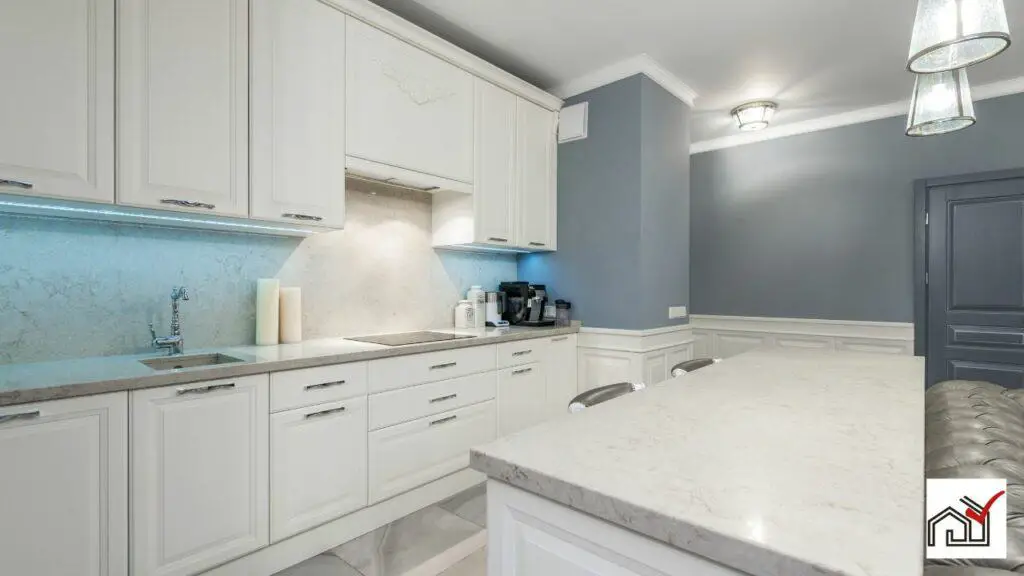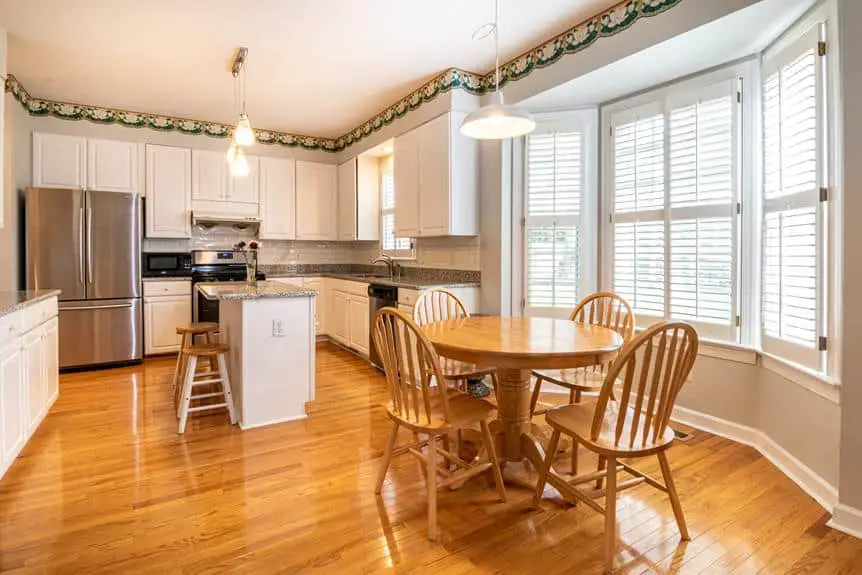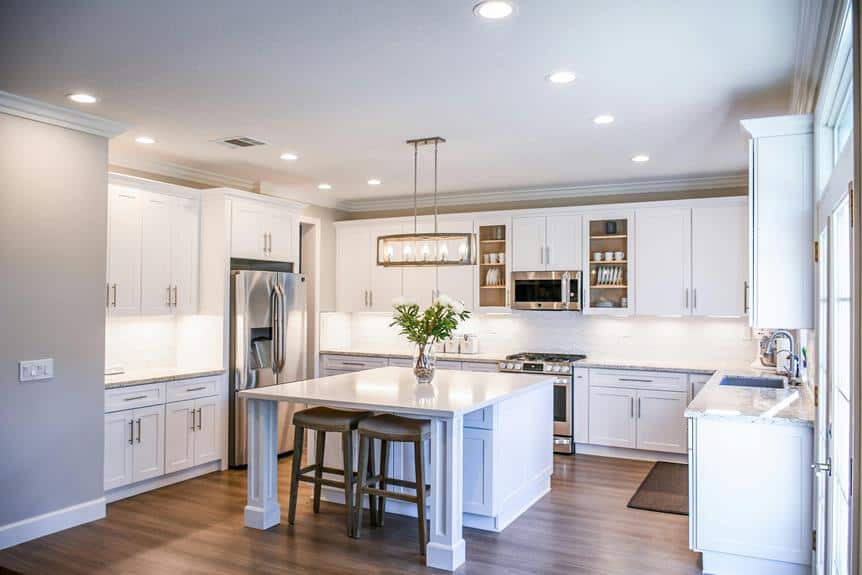Installing a breakfast bar above a radiator can save space in the kitchen. It is important to use materials that can withstand the heat from the radiator and not affect the structure or function of the breakfast bar or radiator. There must be enough airflow around the radiator to prevent any fire risk.
Planning is needed to ensure there is enough room, the weight is distributed correctly, and the radiator can still be easily maintained. If done correctly, a breakfast bar over a radiator can be an effective way to utilize space, offering both comfort and convenience in the kitchen.
Understanding Radiator Heat
Radiators emit heat through convection and radiation, important for warmth in cold months. They work best when warm air circulates freely. When adding a breakfast bar near a radiator in a kitchen, consider how it affects heat distribution.
Placing a breakfast bar above a radiator requires careful planning for ventilation. Proper airflow is necessary to prevent overheating, which can be uncomfortable and damage the breakfast bar. Ensure there is enough space for heat to escape and air to move.
The weight of the breakfast bar must be safely supported. Check that both the radiator and the breakfast bar can handle the load without risking stability.
Choose materials for the breakfast bar that can withstand heat without warping, changing color, or emitting toxins. Consider appearance and durability, as well as thermal resistance.
Safety Considerations
When installing a breakfast bar above a radiator, it is essential to ensure proper ventilation to prevent overheating and reduce the risk of fire. The radiator should not be fully enclosed, as this can decrease its efficiency and create a safety hazard. The breakfast bar materials must be able to withstand heat without damage or risk of burning or melting.
The design should allow for easy access to the radiator for maintenance without blocking valves or other components. The weight and dimensions of the breakfast bar must not put undue stress on the radiator, which could cause damage or affect its function. It is also important that the breakfast bar does not restrict the flow of heat into the room.
Regular checks of the breakfast bar's stability and condition are necessary to maintain safety over time, as heat can impact the longevity of the structure. Following these safety measures allows for the safe use of a breakfast bar in conjunction with a heating system.
Material Selection Tips
Choose materials that resist heat for the safety and durability of a breakfast bar above a radiator. Granite, stainless steel, or tempered glass are suitable for the countertop due to their ability to endure heat without damage. Solid woods or heat-tolerant MDF are recommended for the cabinetry or support, but ensure there is space or insulation to prevent direct radiator contact.
Design the breakfast bar to allow easy access to the radiator for maintenance, using removable panels or a service-friendly design. Measure precisely to ensure the bar fits over the radiator and check that the radiator can support the weight to avoid damage. If the bar is freestanding, ensure it is stable and well-anchored.
For upkeep, use cleaning products appropriate for the chosen materials. Regular maintenance will extend the life and appearance of the breakfast bar.
Design and Placement
When installing a breakfast bar above a radiator, it is important to consider the bar's height, depth, and proximity to the heat source for functionality and safety. The bar should be high enough for comfortable seating and to allow heat to circulate above the radiator, typically between 42 to 46 inches, although this may vary based on radiator size.
The bar's depth must be sufficient for dining and to ensure airflow around the radiator, with a recommended overhang of 10 to 12 inches for legroom.
The bar should be positioned so that it does not block access to the radiator for maintenance, possibly by incorporating a removable design or access panels.
In small kitchens, it is important to maximize space by integrating the dining area with the heating element, possibly adding storage solutions like baskets and hooks to keep the space organized.
To maintain the breakfast bar, regular cleaning is necessary. By considering these design and placement factors, the breakfast bar will be both functional and aesthetically pleasing.
Installation Best Practices
Install the breakfast bar securely using brackets that can support its weight and endure the heat from the radiator below. Choose brackets made from durable metal that resists warping under heat. Ensure there's enough space between the radiator and the breakfast bar to allow proper airflow and prevent overheating, for efficient radiator function.
Select heat-resistant materials for the breakfast bar, such as specially treated woods, metals, or stones, that the brackets and wall can support.
Consider the kitchen's heat convection patterns during installation to avoid obstructing airflow, which can cause uneven heating. If necessary, install a heat shield or use a slatted design for the breakfast bar to let heat pass through.
Install the breakfast bar with care using the right tools and hardware to make sure it's level and secure. Regularly check the brackets and breakfast bar to maintain safety and longevity.
Maintenance and Care
Installing a breakfast bar above a radiator requires diligent maintenance to ensure its longevity and safety. Choose heat-resistant materials to begin with. Regularly check the bar's stability and surface condition to prevent accidents. Clean it often with suitable cleaning products for the material of the bar, and dust and wipe surfaces to avoid dirt accumulation that could impact its function and the radiator's efficiency.
Do not place hot items directly on the breakfast bar's surface to prevent damage such as discoloration or warping. Use heat-resistant mats or trivets to protect it. Following these guidelines will help maintain the breakfast bar's condition and safety.
Alternative Solutions
Alternative heating solutions can help integrate a breakfast bar without hindering the function of a radiator.
- Wall-mounted breakfast bars can be installed above radiators, saving space and maintaining heating efficiency.
- Plinth heaters, installed in base cabinet kick spaces, can replace traditional radiators under a breakfast bar, allowing for a cleaner look.
- Underfloor heating is another option that distributes heat evenly and allows for flexible placement of a breakfast bar, as it does not block heat like radiators.
- A freestanding breakfast bar can be moved easily to accommodate various room layouts and avoid heating issues.
- Additionally, a radiator shelf can protect the breakfast bar from heat by directing it into the room, while also providing extra space.
These solutions allow for the addition of a breakfast bar while ensuring the kitchen or dining area remains effectively heated.




